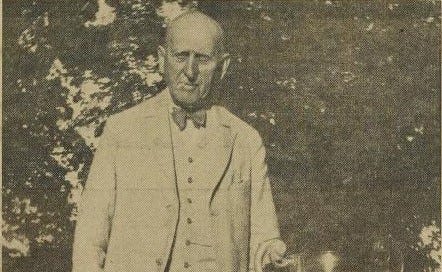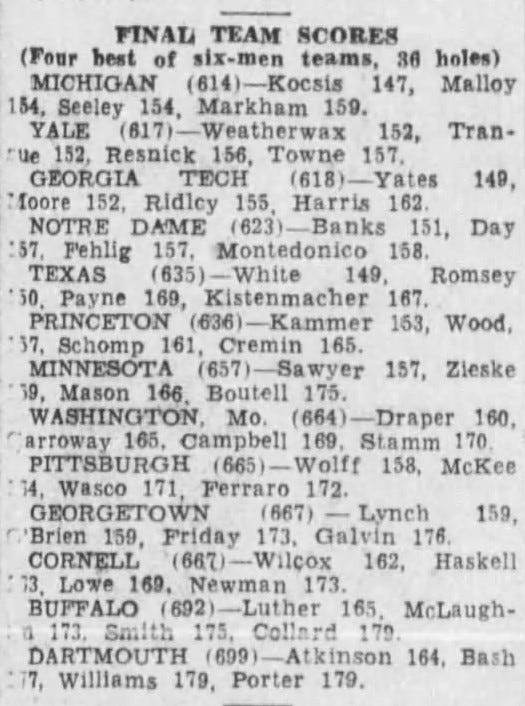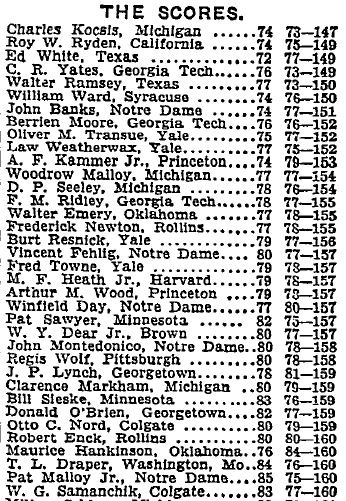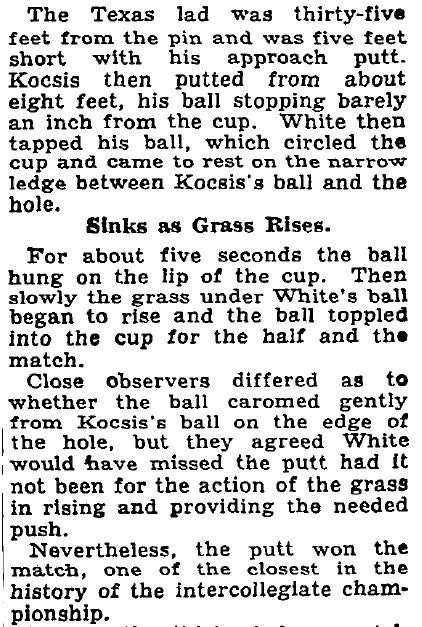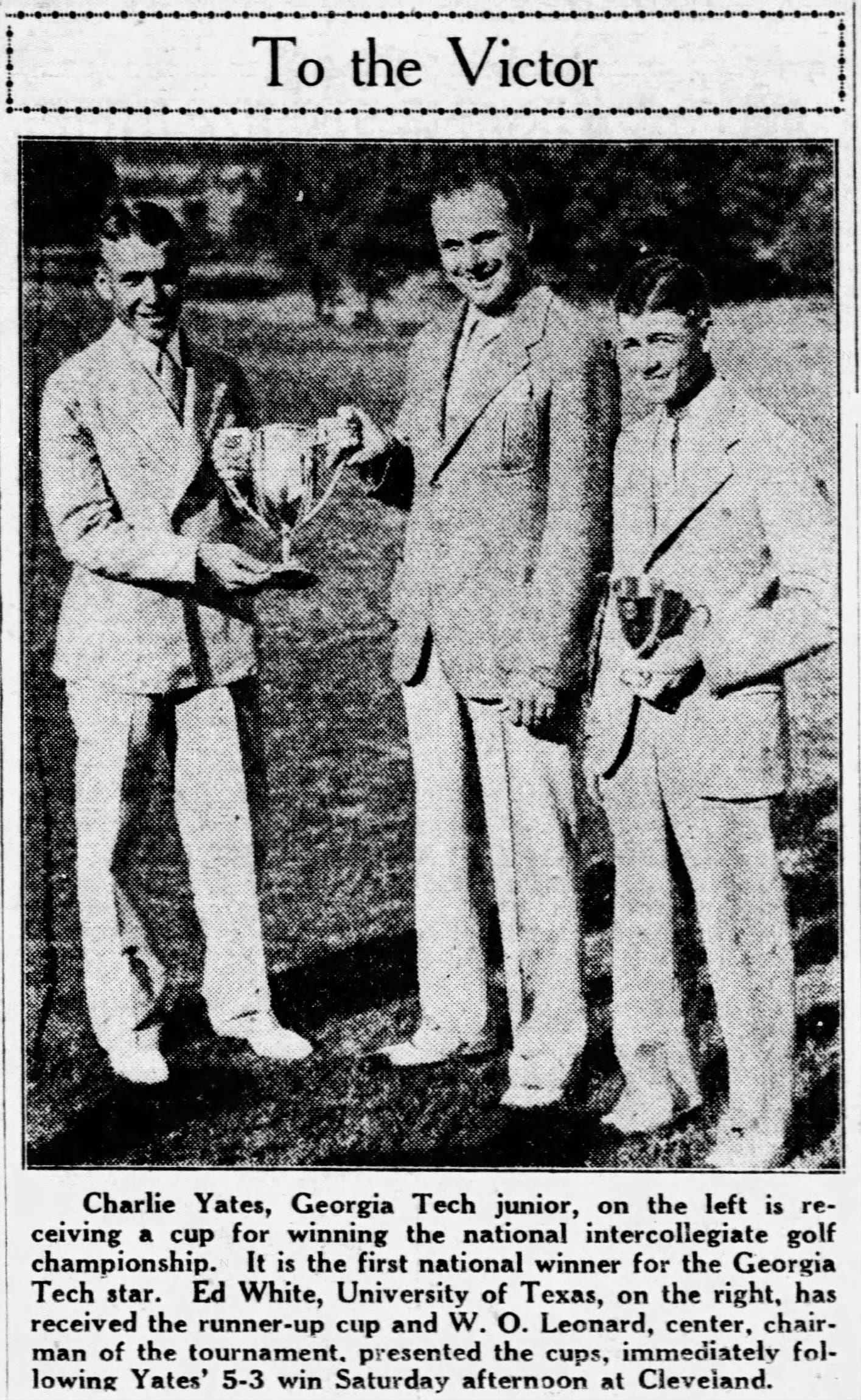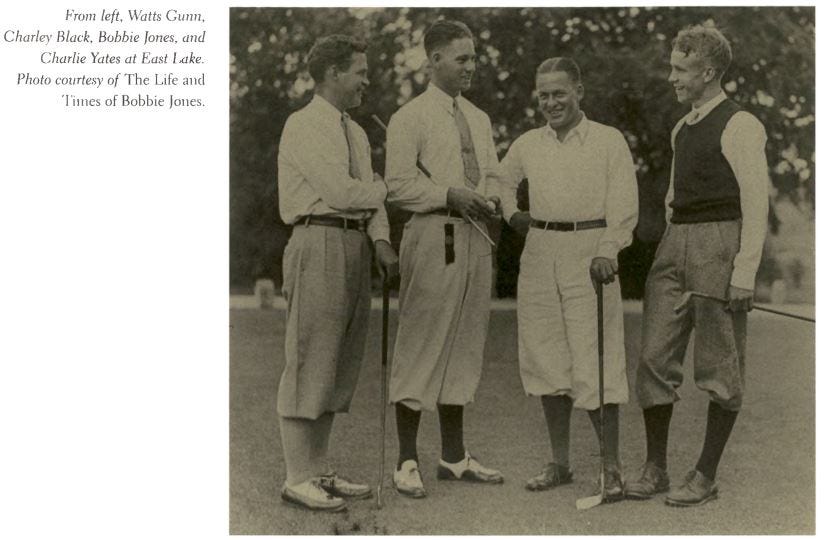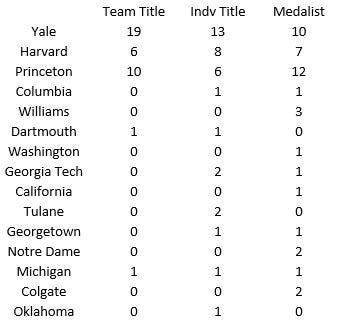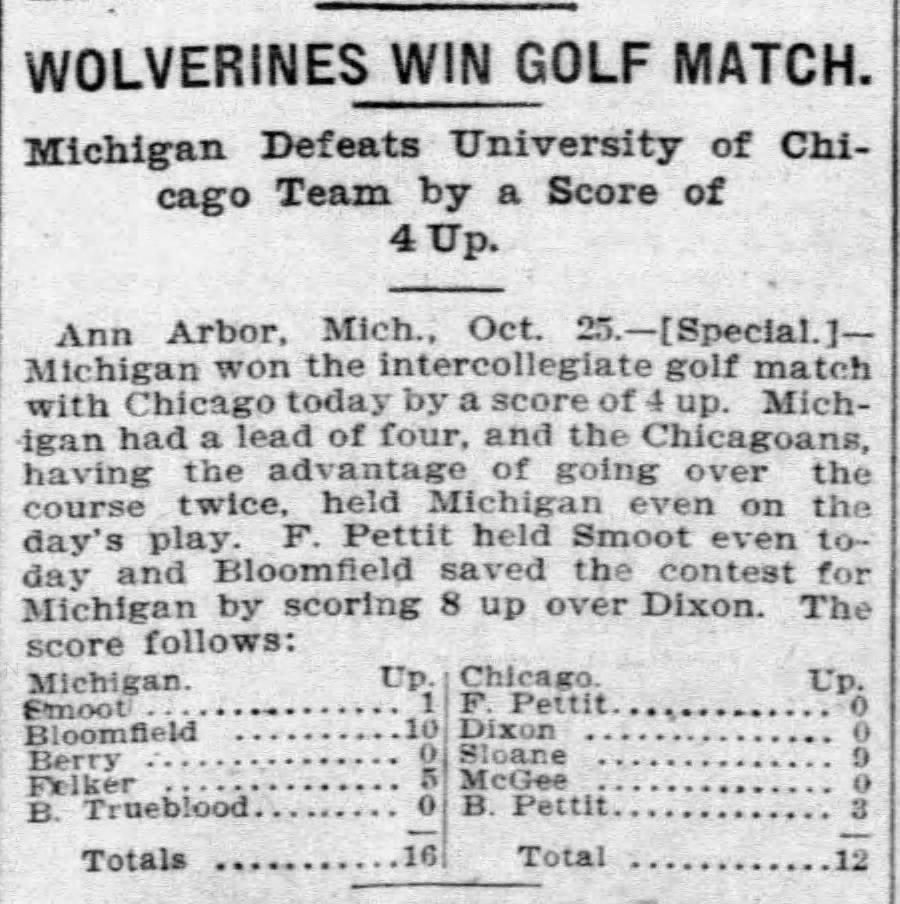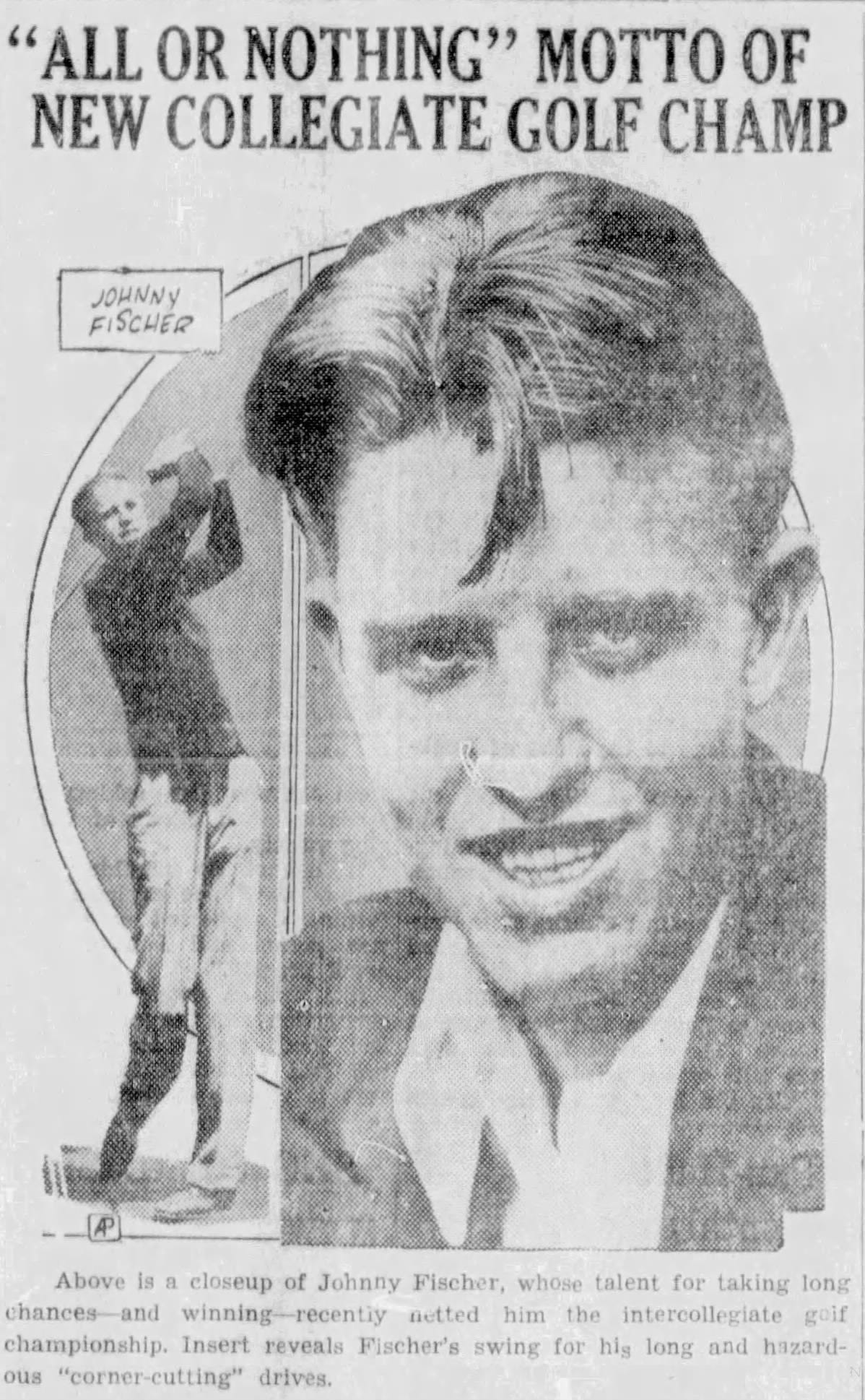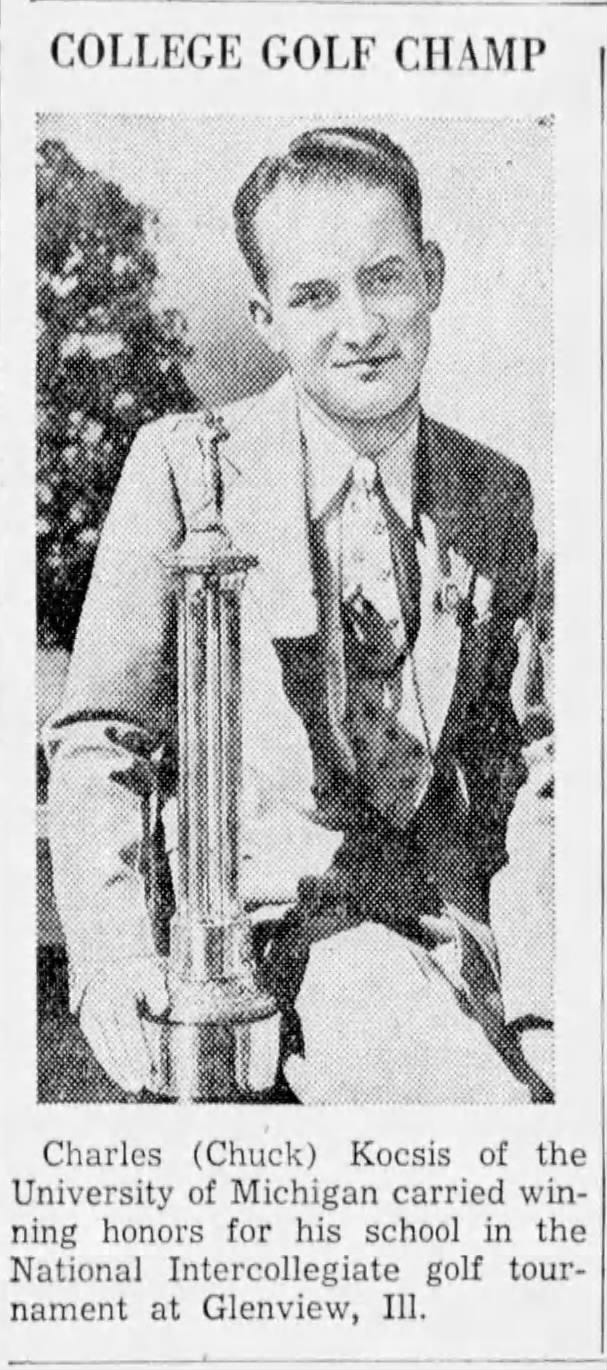This is part of a series on the Men’s Collegiate Championships
IGA Championship Era: 1897-1938
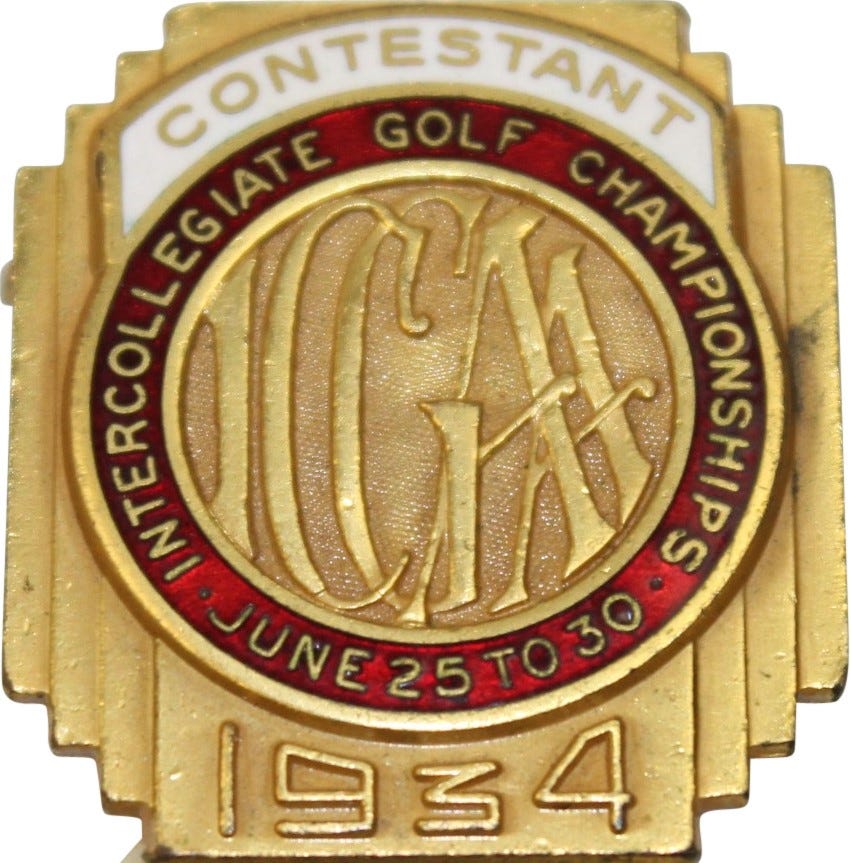
In 1930, the USGA officially took over as the governing body responsible for the collegiate championship, although the student-led IGA would remain in place as the organization financially responsible for this such as purchasing trophies/awards and governing membership. One of the interesting changes that falling under the jurisdiction of the USGA brought to the collegiate championship was the use of contestant badges that matched the exact same design and style as those worn during the USGA-run events such as the US Amateur. Note the “ICGAA” - which likely stands for Inter-Collegiate Golf Association of America - where the other badges have “USGA”. These badges date back to 1930 and were used at least through the 1941 championship, although it’s likely that there were some sort of similar items used before and/or after that timeframe.
Intercollegiate Championship #37: June 25-30, 1934
This championship marks an important turning point in the history of men’s collegiate golf. For the first time, none of the awards went to the traditional blue blood schools, signaling the end of the era of Eastern dominance.
Host: Country Club (Cleveland, OH)
The Country Club located just outside of Cleveland, OH was designed by William Flynn who got his start as a construction supervisor at Merion where he was hired by Hugh Wilson. Flynn, another member of the famed Philadelphia school of golf course architecture, has an impressive list of courses he either designed or renovated, including several more that would eventually host collegiate championships in the coming years.
Format
Team stroke play
Day 1 = 18 holes
Day 2 = 18 holes
**6-count-4, doubles as the individual qualifier
Individual match play (32 players, random draw, 18 hole matches)
Results
Team Champ: Michigan (1)
Michigan came into the IGA tournament as the three-time reigning Big Ten champs. They had finished 2nd in the previous two IGA championships, but were down their best player - two-time reigning individual Big Ten champion Johnny Fischer - who was overseas at St. Andrews participating in the Walker Cup. Proving their talent depth, the Michigan team shocked the three-time reigning IGA champion (and favorite) Yale team by pulling away on the second day to capture the first title won by a “Western” team. In fact, it was only the SECOND championship won by a school other than Yale or Princeton since 1905!
Medalist: Charles Kocsis [Michigan]
Charles Kocsis was not a fill-in player, but in the absence of Fischer he was able to fully shine for the first time. Kocsis captured the individual Big Ten title while helping the Michigan team win a third straight championship. From this year on, Kocsis was as big of a part of Michigan golf as his more accomplished teammate, and was able to join Fischer at St. Andrews in the 1938 Walker Cup. Playing the final round in the rain on a course that was described as being partly underwater, Kocsis actually improved on his first round 74 to lead a trio of players from California, Texas, and Georgia Tech for medalist honors.
Individual Champ: Charlie Yates [Georgia Tech]
Charlie Yates - who called East Lake GC in Atlanta home - was one of the pre-tournament favorites and arguably the best Southern amateur. He cruised to the Finals where he ultimately defeated another Southerner, Ed White of Texas. White, who would actually go on to win the 1935 individual championship, might have been physically and mentally wiped out following the previous day’s 36-hole marathon against the medalist, Charles Kocsis. The White-Kocsis match went back and forth all day, coming to the 36th green with White needing a half to win 1up. The following NYT account described what happened after both players reached the green in 2 shots:
Charlie Yates would go on to win the 1935 Western Amateur, play in the 1936 and 1938 Walker Cups, and win the 1938 (British) Amateur. Several artifacts from his playing days are housed in an impressive display at the Atlanta Athletic Club (seen here around the 25:30 mark). Yates also served as the Augusta National secretary and received the USGA’s highest award - the Bob Jones Award - in 1980. Just like Jones, Yates called East Lake home and was so important to the club that the No. 2 course was named in his honor.
Championship Award Count
EXTRA HOLES: The First Masters
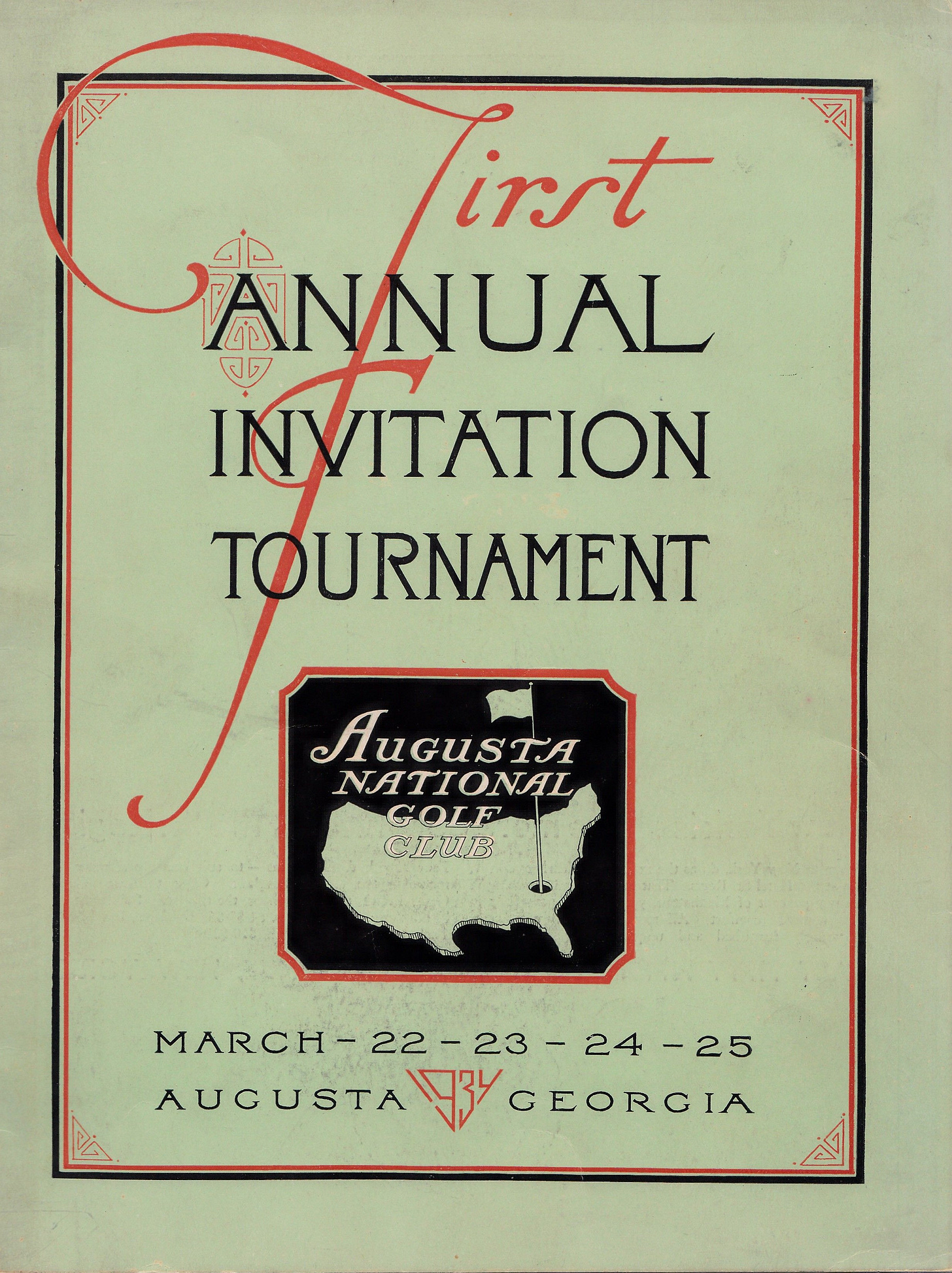
A few months prior to the 1934 Collegiate Championship, Charlie Yates finished ahead of several amateur players in the first playing a new tournament put on by Bobby Jones called the Augusta National Tournament (later stylized The Masters). Now considered one of the best tournaments in the world, Jones’s invitational was already a huge deal even before it started based on the its attachment to one of the greatest amateurs to ever play the game. Because of Jones, amateurs have always held a special place of honor at this pro tournament. Several prominent collegiate golfers were among the relatively small field in the first playing (in order of finish):
Charlie Yates [Georgia Tech] - would win the 1934 IGA champion
George Dunlap Jr [Princeton] - 1930 and 1931 IGA champion, US Amateur champ in 1933
Willie Turnesa [Holy Cross] - member of the famous Turnesa family who would win IGA medalist honors in 1937 and 1938
Sam Perry [Alabama] - 1929 and 1932 Southern Amateur champ
Walter Emery [Oklahoma] - reigning (1933) IGA champion
Jess Sweetser [Yale] - 1920 IGA champ, 1922 US Am champ
COACHES CORNER: The Trueblood Dynasty
Among so many other things, Dr. Thomas Trueblood was Michigan’s first golf coach who helped raise the program from its infancy into a national powerhouse in the early to mid-1930s. Dr. Trueblood had been a long time faculty member at the University of Michigan when he took up golf in early 1902, helping to organize an unofficial team and conduct the first collegiate golf match in the West in which Michigan defeated the University of Chicago.
Michigan sent a team to the very first “Western Intercollegiate” (basically Big Ten Championship) in 1920 and continued to make a decent showing thereafter, although their only Big Ten championship was an individual title won by Mode Holdsworth in 1924.
In 1931, Michigan hosted its first Big Ten championship (finished 2nd) and then made its first team appearance at the IGA championship. The breakthrough season came the next year in 1932 when Dr. Trueblood’s team won its first Big Ten title and star sophomore Johnny Fischer won the individual title. In the IGA championship, Michigan lost out to Yale by only a single stroke then Fischer capped off the dream season with the first individual title won by a Big Ten player. Later that year, Fischer would reinforce his status as one of the top players in the nation by capturing medalist honors at the US Amateur, a feat he would repeat the next year as well.
The next four years were incredible for Michigan fans. Both the team collectively and Fischer individually repeated as Big Ten champions in 1933. Once again Michigan finished as the runner-up in the IGA team championship, but a strained muscle forced Fischer out of the tournament before the match play portion started. As we’ve seen above, the 1934 season was a true culmination in the Michigan team prowess, winning an unprecedented third straight Big Ten championship and then finally bringing home the IGA team championship.
The 1935 season proved that the Michigan dominance was no fluke. Another team Big Ten championship, Johnny Fischer returning to reclaim the individual Big Ten title (his third), and the team once again won the IGA team title. Although the individual title eluded them, Kocsis and teammate Woody Malloy tied for medalist honors, bringing more hardware back to Ann Arbor.
The 1936 season would proved to be one of mixed emotions. At his 80th birthday party, Dr. Trueblood announced his intention to turn over coaching responsibilities to longtime assistant Ray Courtright (who held that position through WWII) and step into the newly created role of “Coach Emeritus”. The send-off for Dr. Trueblood included a fifth straight Big Ten team championship, a second individual Big Ten title for Charles Kocsis, a fourth place finish in the IGA team championship (5 strokes back), and finally an individual IGA title for Kocsis.
Over the course of an incredible coaching career, which involved starting a program from literally nothing and taking it to the height of collegiate play, Dr. Trueblood’s teams won 54 of 64 Big Ten dual matches (58-8-2), 5 straight Big Ten team championships, 6 individual Big Ten titles, 2 individual IGA titles, and back-to-back team IGA championships at a time when only 4 other universities (Yale, Harvard, Princeton, and Dartmouth) had won any in the previous 36 playings. Incredible may actually be an understatement.
Thanks for reading!
Up Next:
In the next post we will cover the 1939 championship, the first ran by the NCAA. We’ll discuss how the NCAA came to take over the championship, which includes Chick Evans’s return to college golf. Also, our coaching spotlight falls on Stanford’s Eddie Twiggs.

